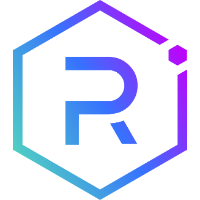







































BlockDAG Keynote 3 Overview: How It Outsmarts LINK & BAND
 BDAG
BDAG
 BAND
BAND
 READ
READ
 LINK
LINK
 TNGBL
TNGBL
BlockDAG’s Keynote 3, Backed by $210M, Attracts Attention as BAND Falls Below $1 and LINK Nears $14
Data alone doesn’t propel blockchains—the method of data delivery is crucial. Chainlink and Band Protocol have both been instrumental in connecting smart contracts with off-chain data through decentralized oracle networks, supporting DeFi and more. Chainlink's hybrid contracts and Band's ability to reach across blockchains have kept them relevant amid market changes, yet their impact remains digital. Meanwhile, BlockDAG (BDAG) is creating infrastructure that extends beyond digital solutions, delivering physical hardware as part of its blockchain technology.
With $210 million gathered and over 19 billion coins distributed, BlockDAG’s combination of software and tangible products lends substantial support to its blockchain framework.
Chainlink: Linking Blockchains with External Data
Chainlink (LINK) offers a decentralized oracle network that allows smart contracts to utilize external data. Traditional blockchains cannot independently access data outside their network, but Chainlink provides secure, tamper-proof oracles that supply smart contracts with dependable data from APIs, financial entities, IoT devices, and more. This capability is vital for applications like DeFi, insurance, gaming, and supply chain management, where smart contracts rely on external data for precise execution.
Since its inception in 2017, Chainlink has become a critical component for various decentralized applications, introducing hybrid smart contracts that merge on-chain operations with off-chain data sources.
As of March 29, 2025, LINK's trading price is $13.62, reflecting a positive trend with a 29.14% increase over the past week. Over the last year, LINK has shown a consistent, albeit modest, performance, with price projections ranging from $14.24 to $14.68 by the end of March 2025.
Band Protocol: Facilitating Cross-Chain Data Sharing
Band Protocol (BAND), a decentralized oracle platform, enables the connection of external data to smart contracts across different blockchains. Initially launched on Ethereum, Band Protocol moved to its own BandChain, using the Cosmos SDK to enhance scalability, speed, and interoperability with various blockchains. This shift allows the protocol to amalgamate APIs and off-chain data efficiently, supporting diverse decentralized applications like DeFi, prediction markets, and gaming.
Distinguished by its rapid data transfer and reduced transaction costs, Band Protocol’s shift to a Cosmos-based infrastructure has enabled it to integrate across different ecosystems while retaining decentralization.
As of March 29, 2025, BAND is trading at roughly $0.725968, marking a significant decrease from its earlier price, reflecting the wider market's volatility. Future forecasts are mixed, with some analysts predicting a recovery to around €2.70 by the end of the year, while others anticipate a continued downturn. The long-term viability of Band depends on the widespread adoption of its cross-chain data services.
Tangible Technology in Blockchain: BlockDAG's Real-World Approach
In a field dominated by intangible assets and digital-only initiatives, BlockDAG stands out by anchoring its future in concrete elements—actual physical infrastructure. This endeavor extends beyond just software deployment or platform introductions. It involves distributing thousands of X30 and X100 ASIC miners to early participants, providing them with a substantial role in empowering the decentralized network.
These miners are not merely aesthetic gadgets. They are integral to BlockDAG's hybrid framework, blending Proof-of-Work security with Directed Acyclic Graph scalability. This setup facilitates numerous simultaneous transactions per second, significantly enhancing operational efficiency. In contrast to other projects that depend entirely on virtual consensus mechanisms or third-party cloud solutions, BlockDAG’s design promotes true decentralization from the hardware level, with each miner enhancing network robustness and processing capacity.
This approach of physical distribution bolsters confidence—not merely supporting software but investing in actual assets that forge a direct link to the network's structural foundation. This strategy has propelled one of the most successful crypto presales lately, with BlockDAG amassing $210 million thus far and distributing over 19 billion coins. Currently, in its 27th batch, the price per BDAG stands at $0.0248, marking a remarkable 2,380% gain for initial participants since the first batch.
With the impending mainnet activation, these miners are poised to become a crucial element of consensus. While competitors may concentrate on promotional strategies or theoretical models, BlockDAG has already realized tangible outcomes—delivering hardware, developing software, and building momentum. This network is not only one to invest belief in; it’s one to physically engage with.
Final Say
While entities like Chainlink and Band Protocol enhance smart contracts through their oracle networks, they operate solely within the digital domain. Their efforts are vital for numerous applications, yet they are confined to software solutions.
Contrastingly, BlockDAG is making strides by solidifying its ecosystem with both programming and tangible infrastructure. The distribution of actual mining equipment to users not only fosters trust but also introduces a tangible level of decentralization and signifies a deep commitment to long-term viability.
As participants seek projects with durability and scalability, BlockDAG presents a concrete solution—physical devices in their hands, digital currency in their wallets, and a network engineered to function on more than mere conceptual promises.
Presale: https://purchase.blockdag.network
Website: https://blockdag.network
Telegram: https://t.me/blockDAGnetworkOfficial
Discord: https://discord.gg/Q7BxghMVyu
| Disclaimer: The text above is an advertorial article that is not part of Coincu.com editorial content. |

